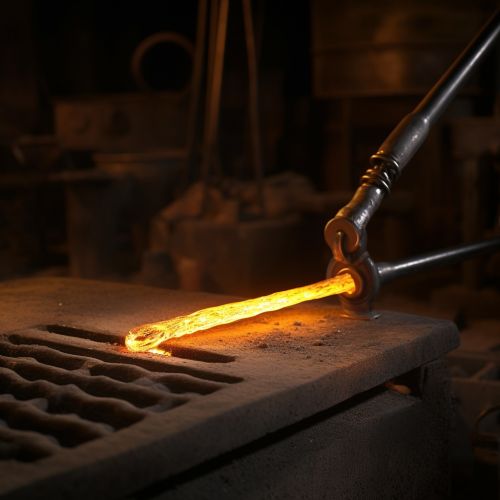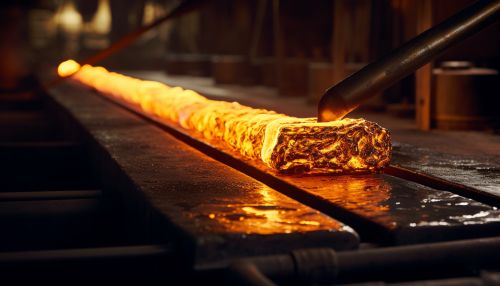Thermal conduction
Overview
Thermal conduction is the transfer of heat (internal energy) by microscopic collisions of particles and movement of electrons within a body. The microscopically colliding particles, that include molecules, atoms and electrons, transfer disorganized microscopic kinetic and potential energy, jointly known as internal energy. Conduction takes place in all forms of ponderable matter, such as solids, liquids, gases and plasmas.
The Physics of Thermal Conduction
Thermal conduction occurs through two mechanisms: microscopic work done by particles and heat carried by electrons. The rate at which energy is conducted as heat between two bodies is proportional to the temperature difference between the two bodies and the path over which the heat is conducted. This is known as Fourier's law of thermal conduction.


Microscopic Work Done by Particles
In solids, thermal conduction is mediated by the combination of vibrations of the crystal lattice (phonons) and – in metals – by electrons. Heat transfer through lattice vibration (phonons) is the dominant mechanism in nonmetals, insulators and at low temperatures generally. This is due to the lack of free (delocalized) electrons.
Heat Carried by Electrons
In metals, thermal conduction is primarily due to free electrons. The energy is transferred by the free electrons, which move randomly and have an average kinetic energy proportional to the absolute temperature (as given by the Boltzmann constant). When a temperature gradient is applied, the randomness of the electron motion remains, but there is also a net drift of electrons from the hot region to the cold region, resulting in heat transfer.
Thermal Conductivity
Thermal conductivity (k) is the property of a material to conduct heat and is measured in watts per meter-kelvin (W/(m·K)). It arises from the kinetic energy of atoms or molecules, and in metals, the motion of electrons. The thermal conductivity of a material is highly dependent on composition and structure. Generally speaking, dense materials such as metals and stone are good conductors of heat, while low density substances such as gas and porous insulation are poor conductors of heat.
Factors Affecting Thermal Conduction
Several factors affect the rate of thermal conduction. These include the temperature gradient, the cross-sectional area through which heat is transferred, the length of the path through which heat is transferred, and the properties of the materials involved.
Temperature Gradient
The rate of heat transfer by conduction is proportional to the temperature gradient, which is the rate of change in temperature with distance. In other words, heat is transferred more rapidly over larger temperature differences.
Cross-Sectional Area
The rate of heat transfer by conduction is also proportional to the cross-sectional area of the path through which heat is being transferred. Thus, heat is transferred more rapidly through larger cross-sectional areas.
Path Length
The rate of heat transfer by conduction is inversely proportional to the length of the path through which heat is being transferred. Thus, heat is transferred more slowly over longer distances.
Material Properties
Different materials conduct heat at different rates. Metals are excellent conductors of heat, while nonmetals and gases are poor conductors of heat. The thermal conductivity of a material is a measure of its ability to conduct heat.
Applications of Thermal Conduction
Thermal conduction plays a crucial role in many areas of technology and nature. It is essential in the design of heat sinks for electronic devices, insulation for buildings, and in understanding and predicting weather patterns. In the human body, conduction controls the temperature distribution within tissues, which may be important in hyperthermia treatment of cancer.
